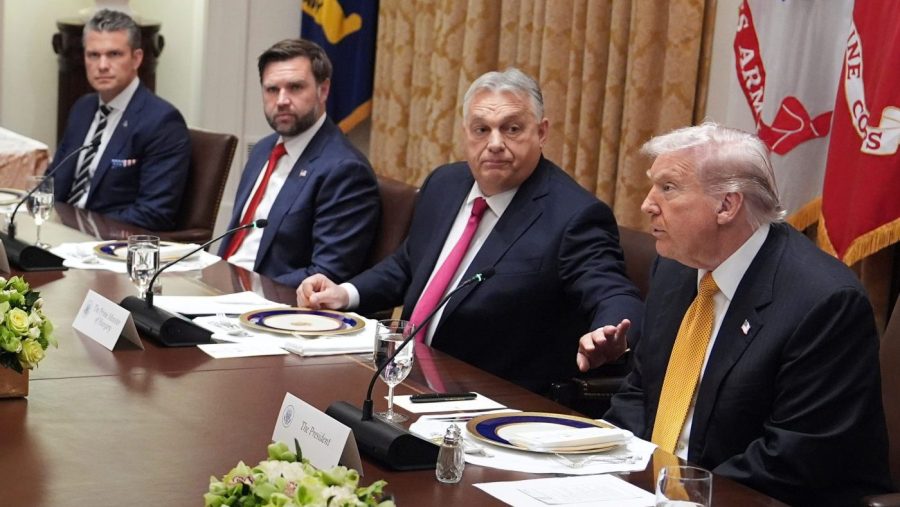President Trump and Defense Secretary Pete Hegseth defended the U.S. government’s decision to withdraw some troops from Romania as Bucharest seeks a reversal of the move, warning of continued threats on NATO’s eastern flank.
Trump, taking questions during a meeting with Hungarian Prime Minister Viktor Orbán at the White House, was asked why the Pentagon was scaling down troops in Romania just weeks after Trump said the U.S. would not pull troops out of Europe.
“We make changes. We move — it’s the same number, total number, but we move people around. I happen to like the Romanian people. I think they’re great people,” Trump said.
Hegseth said the decision was coordinate with the White House.
“It’s all part of the view that we have of Europe. And there will remain troops in Romania, but there’s some change in how we rotate and how many..,”Hegseth said, adding that the decision was coordinated with NATO Secretary General Mark Rutte, U.S. European Command and that allies were “notified in advance.”
Last week, the U.S. said it would cut back about 800 infantry brigade troops, a decision that affected Romania, Slovakia, Hungary and Bulgaria. Still, 1,000 U.S. soldiers will remain deployed in Romania.
The move instantly sparked pushback from Sen. Roger Wicker (R-Miss.), the chair of the Senate Armed Services Committee, and Rep. Mike Rogers (R-Ala.), the chair of the House Armed Services Committee, along with other lawmakers, arguing the decision was not coordinated with Congress and NATO.
Romanian State Secretary for Defense Sorin Moldovan said on Thursday that the U.S. should reverse the move, adding it is “not a good sign” for the bilateral relationship between Washington and Bucharest.
“I believe this decision can be overturned … and it should be overturned,” Moldovan told Politico Europe.
“We need to have a stronger bilateral talk with the U.S. to make the current administration understand that the threat is here on the eastern flank,” the country’s deputy defense minister said.
The drawback of U.S. forces comes as NATO countries contend with recent airspace incursions by Russia as the war in Ukraine continues in its fourth year.
Rutte downplayed the decision on Wednesday during his visit to Bucharest, saying the move takes place “all the time” and that NATO “can always scale up collectively, including in Romania.”
Moldovan, the deputy defense minister, concurred, but argued that the decision could help ignite Russia’s “propaganda” of the absence of unity within NATO.
“If we speak on operational levels, nothing has changed since the withdrawal,” Moldovan said on Thursday.
“But the … political symbolism is a bit weird to have right now,” he said.
The issue around informing Congress about the withdrawal of troops from Romania came up during Tuesday’s Senate Armed Services Committee, where several GOP senators argued that members of the panel were not briefed on the decision prior to it being reported by the news media.
“I think all of us would like to have more information on how the decision was made,” Sen. Rick Scott (R-Fla.) said.
